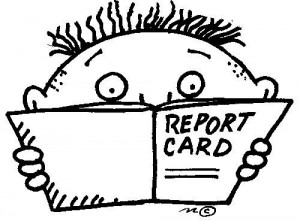The Home Library Effect: Transforming At-Risk Readers

Despite these barriers, Melinda made extraordinary academic progress. She moved from a kindergarten level (a four on the Developmental Reading Assessment) to a 4th grade level (a 40) in the two years she was in my class. Her demeanor changed: She began smiling and laughing more often, and she became a confident scholar.
Part of the reason for Melinda’s growth is elusive—that combination of resiliency, strength, and utter grit that awes those of us lucky enough to teach these remarkable children. But another reason for her success is simple—instead of one book at home, Melinda now has a home library of 40 books.
The Project
We called our classroom adventure “The 1,000 Books Project.” Each of the 25 children in my class received 40 books over the course of 2nd and 3rd grade, for a total of 1,000 new books in their homes.
The project was simple to launch. Scholastic donated 20 books per child, and I purchased the other 20 through a combination of my own funds, support from individuals and local organizations, and bonus points. The kids received three types of books each month: copies of class read-alouds, guided reading books, and individual choices selected from Scholastic’s website.
Working with family members, each child chose a space to become a home library, ranging from a cardboard box decorated with stickers to a wooden bookcase. Through class discussions and our class blog, the students talked about everything from how they organized their libraries to their favorite reading buddy at home.
The total cost for each student’s home library was less than $50 each year, a small investment to move a struggling reader from frustration to confidence.
Growing Readers
These 25 students made more progress in their reading than I have experienced with any other class. By the end of the project’s second year, they had exceeded the district expectation for growth by an average of nine levels on the DRA and five points on the computerized Measures of Academic Progress reading test. And they made this growth despite formidable obstacles to academic success—20 of the 25 are English language learners, and all but one live in poverty.
The shift in the students’ home libraries reflects their growth as readers—the first book every child received was the picture book Where The Wild Things Are, and the 40th book was the novel The Lightning Thief, which is geared toward 5th and 6th graders.
While the numerical data on my students’ achievement is encouraging, it is their stories that will stick with me. The exhilaration that blazed through the room each time another massive box from Scholastic arrived. The rainy day of indoor recess when the kids made up “The Fantastic Mr. Fox Game” based on our read-aloud and ran around shrieking gleefully, the baby foxes fleeing the vile hunters. The kind of question a teacher loves to hear: “Can we take the poetry books out to recess today?”
I watched child after child become a different kind of writer, thinker, and human being because of his or her growth as a reader.
Closing the Book Gap
Jonathan Kozol has called it “the shame of the nation”: the educational gap between children born poor and children born into affluence. To close that gap, we need to look beyond the hours students spend in class to the hours they spend at home. A 2001 study by Susan Neuman and Donna Celano found that the ratio of books to children in middle-income neighborhoods is 13 books to one child, while in low-income neighborhoods the ratio is one book to 300 children.
This “book gap” is easier to erase than the more complex barriers involved in poverty. Richard Allington found that giving children 12 books to take home over the summer resulted in gains equal to summer school for lower-income children, and had twice the impact of summer school for the poorest of those children.
All this without worksheets, extrinsic rewards, or sitting in a stifling classroom in the middle of July.
Home reading surveys showed that at the beginning of 2nd grade, my students had access to an average of three books at home. Increasing this number to 40 or more books had far-reaching effects. Students’ fluency improved because the children could engage in repeated readings of favorite “just right” books, and parents reported increased time spent reading at home during weekends, holidays, and summer break.
The only incentive for this increase in reading time was intrinsic: the pleasure each child felt in reading his or her own book, beloved as a favorite stuffed animal.
Family Literacy
The home libraries have also had a tremendous impact on each child’s love of reading, which has ignited that same love of books in their parents, siblings, cousins, and friends. Several students told me their parents, brothers, and sisters have now placed their own books and magazines in what has become the family’s home library. Ava said to me on a field trip during the last week of school, “Mr. Minkel, I just finished reading The B.F.G. to Esperanza [who is 4], and she liked it! I even think Yesica [who is 2] understood it, because she was laughing at the part about whizz-poppers!”
When I expressed surprise at how much progress Melinda had made since the last time I’d done the DRA with her, she said, “Well, you know those books you gave me? Now when my mom and my little sister are watching TV, they say, ‘Melinda, read to us!’ So we turn off the T.V., and I do.” This courageous 7-year-old girl has become the one literate person in her family, and her ability to read has changed the fabric of her family’s evenings.
A Simple Truth
The world of the classroom is incredibly complex. But for those of us fortunate enough to teach, we have discovered certain simple truths. Build a relationship with each child through one-on-one moments, whether it’s a conversation while taking a running record or a hug goodbye at the end of the day. Listen carefully to what our students say, and pay close attention to what they do and create. Laugh a lot.
This is my newest addition to that list of simple truths: To help kids develop a love of reading, put great books in their hands. Then watch in amazement as their worlds change.
Justin Minkel teaches 2nd and 3rd grade at Jones Elementary in northwest Arkansas. He is the 2007 Arkansas Teacher of the Year, a 2011 National Board-certified teacher, and a member of the Teacher Leaders Network. He is currently writing a book for teachers on Common Core-aligned instruction at the elementary level.






